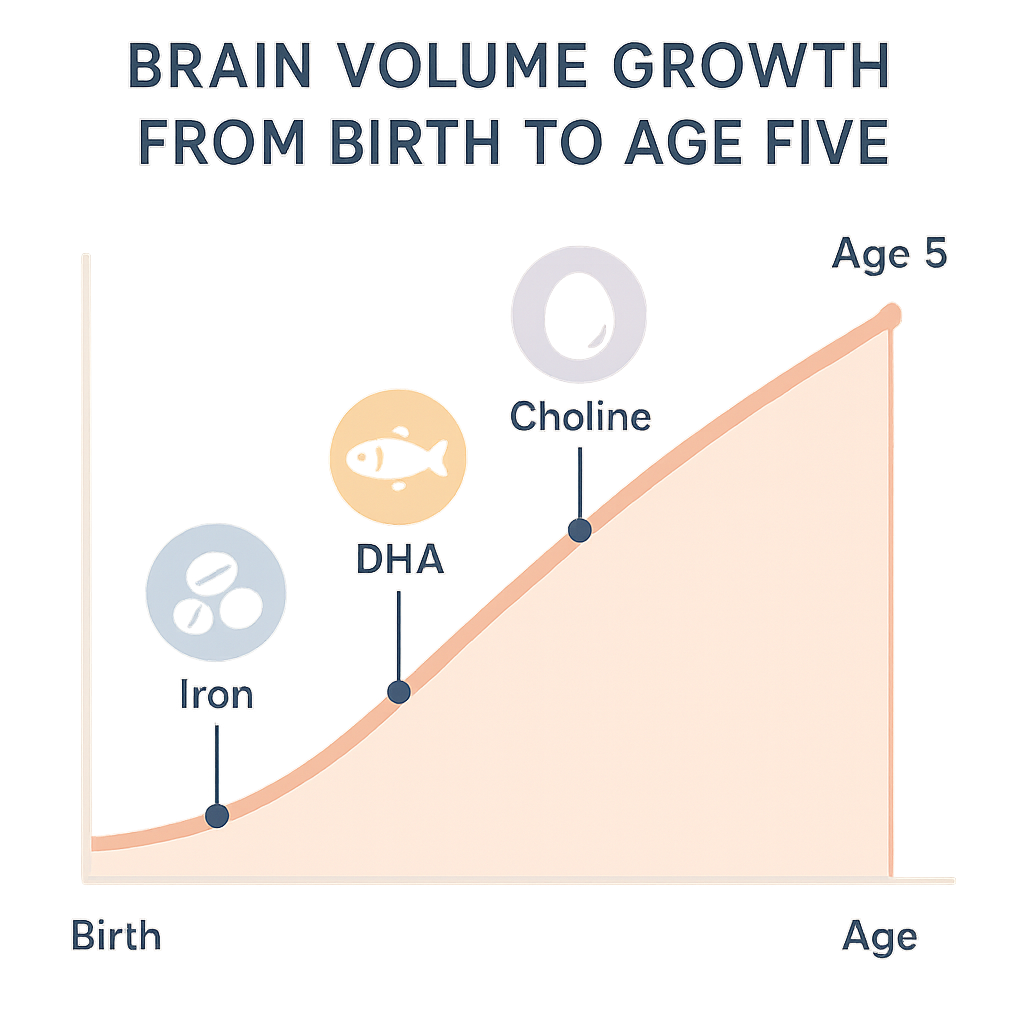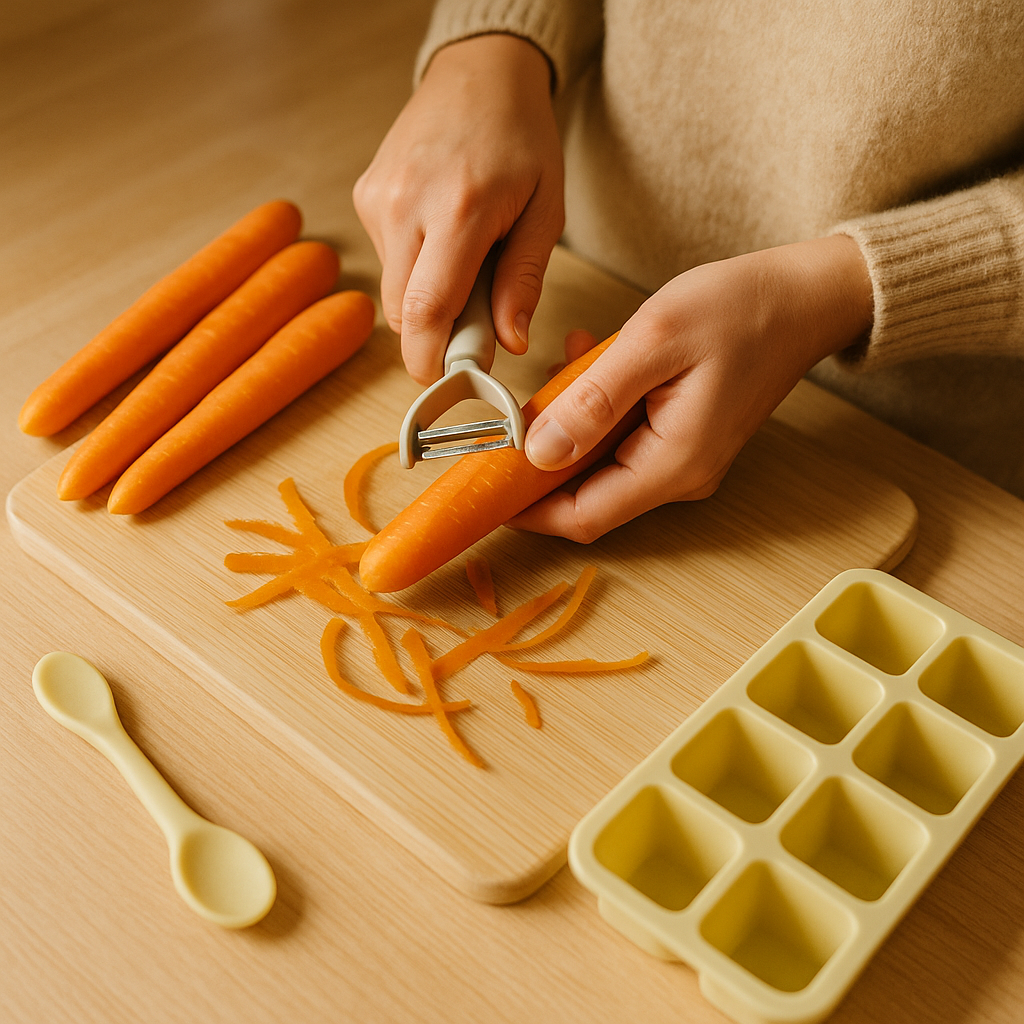The first 1,000 days of life build the wiring for everything from language to memory. Yet 94% of both homemade and store-bought baby foods contain at least one brain-harming heavy metal. Learn more about heavy metal contamination in baby foods. So which option truly protects—and powers—your baby’s growing mind?
- Why does early nutrition make or break brain development?
- Does homemade baby food really pack more brain-building nutrients?
- Are heavy metals worse in store-bought or homemade purees?
- What daily steps lower toxins while boosting nutrients?
- Is a hybrid feeding strategy the smartest path for most families?
- What research gaps remain—and why do they matter?
- Your top baby-food questions, answered
- So—will today’s food choices shape tomorrow’s brain power?
Why does early nutrition make or break brain development?
The short answer: Rapid brain growth demands a steady supply of specific nutrients.
During infancy, the brain forms up to one million neural connections every second. By age 5, it reaches 90% of its adult size. Iron delivers oxygen to growing cells, DHA builds flexible membranes, and choline fuels neurotransmitter production. A mild iron deficiency in year 1 can trim 6–8 IQ points, impacting learning and memory.
Curious about each key nutrient? Visit 7 Essential Nutrients for Your Baby’s Brain for a deeper dive.

Does homemade baby food really pack more brain-building nutrients?
Often yes, but only if you plan for it.
Blending your own purees lets you fold in choline-rich egg yolk, iron-dense lentils, or DHA-laden salmon. In contrast, two-thirds of supermarket baby foods deliver only 2–4 of the 16 nutrients experts consider critical for cognition.
Example comparison (per 3 oz / 85 g serving):
| Nutrient | Spinach-Egg Homemade Purée | Popular Sweet-Potato Pouch |
|---|---|---|
| Choline | 100 mg | 10 mg |
| Iron | 1.8 mg | 0.3 mg |
| Protein | 4 g | 1 g |
Still, commercial options shine in two areas: reliable texture for early eaters and routine fortification—especially iron in baby cereals. Pairing that cereal with tips from Iron Deficiency in Babies can close nutrient gaps quickly.
Are heavy metals worse in store-bought or homemade purees?
The risk depends on ingredients, not whether the food is homemade or store-bought.
Heavy metal contamination in baby food comes primarily from soil and water, where crops like rice, carrots, and sweet potatoes absorb metals such as arsenic, lead, and cadmium. The FDA notes that these metals are naturally present in the environment, so both homemade and commercial purees using these ingredients carry similar risks. For example, rice-based products often have higher arsenic levels due to rice’s growth in flooded conditions, while bananas and meats typically test lower. Cooking rice with excess water and draining it can reduce arsenic by up to 60%. Parents can minimize exposure by choosing low-risk ingredients and varying food types, regardless of preparation method. Check updates from trusted sources like the FDA or pediatric health groups. They’re always refining advice on baby food safety. Learn more at Toxins in Baby Food.
Get the full safety breakdown in Toxins in Baby Food.
What daily steps lower toxins while boosting nutrients?
Follow these proven tweaks:
- Swap high-arsenic rice cereal for oats, barley, or quinoa.
- Peel and steam root veggies; discard the cooking water to shed surface metals.
- Serve low-mercury fish (salmon, sardines) twice a week—see DHA and Omega-3.
- Scan labels for “no added sugar or salt,” and look for third-party Clean Label certifications.
- Batch-cook and freeze homemade blends in 1-oz cubes; they keep nutrients intact for 30 days.

Is a hybrid feeding strategy the smartest path for most families?
Yes—a mix of homemade and store-bought foods balances nutrition, flavor, and convenience for busy families.
It is common for caregivers to combine homemade and commercial baby foods using homemade purees for cultural dishes or nutrient-packed meals at home and grabbing pouches or jars for travel, daycare, or quick feeds. For example, you might blend iron-rich lentil puree for dinner but pack a fortified sweet potato pouch for a park outing. This flexibility reduces parental stress, which is key to responsive feeding—where you tune into your baby’s hunger cues. Responsive feeding supports language skills and emotional regulation, helping your child thrive. A hybrid approach also lets you prioritize nutrient-dense foods like egg yolk or salmon while leaning on commercial options for consistent texture or fortification. Ready to try it? Explore Best First Foods for Your Baby’s Brain for mix-and-match menu ideas that fit your family’s rhythm.
What research gaps remain—and why do they matter?
Critical gaps in infant nutrition research leave parents navigating uncertainty.
Long-term studies comparing cognitive outcomes—such as IQ, memory, or focus—in children fed primarily homemade versus commercial baby foods are notably absent. For example, we lack data on whether homemade purees enhance attention skills by age 7 compared to store-bought options. A 2022 review emphasizes the need for longitudinal research to link early diet to brain development).
Similarly, the U.S. has no enforceable limits for heavy metals like arsenic, lead, or cadmium in baby foods, with the FDA relying on non-binding action levels. These gaps are significant because parents need robust evidence to make informed feeding choices, and weak regulations heighten exposure risks to neurotoxic metals, which can impair cognitive growth. Check Consumer Reports: Heavy Metals in Baby Food.
Future research should track children into school years, assessing cognitive and behavioral outcomes alongside metal exposure and dietary patterns. Until then, parents should diversify foods and advocate for stricter standards. Learn more at Toxins in Baby Food.
Why These Gaps Matter: Without long-term studies, parents rely on incomplete data, potentially missing opportunities to optimize brain development. Loose regulations fail to ensure safety, leaving infants vulnerable to metals linked to lower IQ and developmental delays.
Until then, informed parents remain the first line of defense.
Your top baby-food questions, answered
-
Is organic food safer for my baby’s brain?
Not for heavy metals. Organic labels cut pesticide exposure but don’t guarantee lower lead or arsenic. Prioritize variety over any single label. -
How long can I store homemade puree safely?
Refrigerate 48 hours; freeze up to 30 days. Reheated leftovers belong in the trash, not back in the fridge. -
What single food delivers the most brain power?
Egg yolk. One yolk offers choline, iron, vitamin B12, and healthy fats in a spoon-sized portion. -
Can I mix breastmilk into a store-bought puree?
Absolutely. It boosts immune factors and healthy fats—learn more at How Breastfeeding Boosts Your Baby’s Cognitive Growth.
So—will today’s food choices shape tomorrow’s brain power?
Early nutrition fills the toolbox your child’s brain uses for life. Whether you’re simmering spinach on the stove or twisting open a pouch in the park, aim for nutrient-dense variety and smart contaminant cuts. Those mindful bites build neural connections, confidence, and endless possibilities—one tiny spoonful at a time.